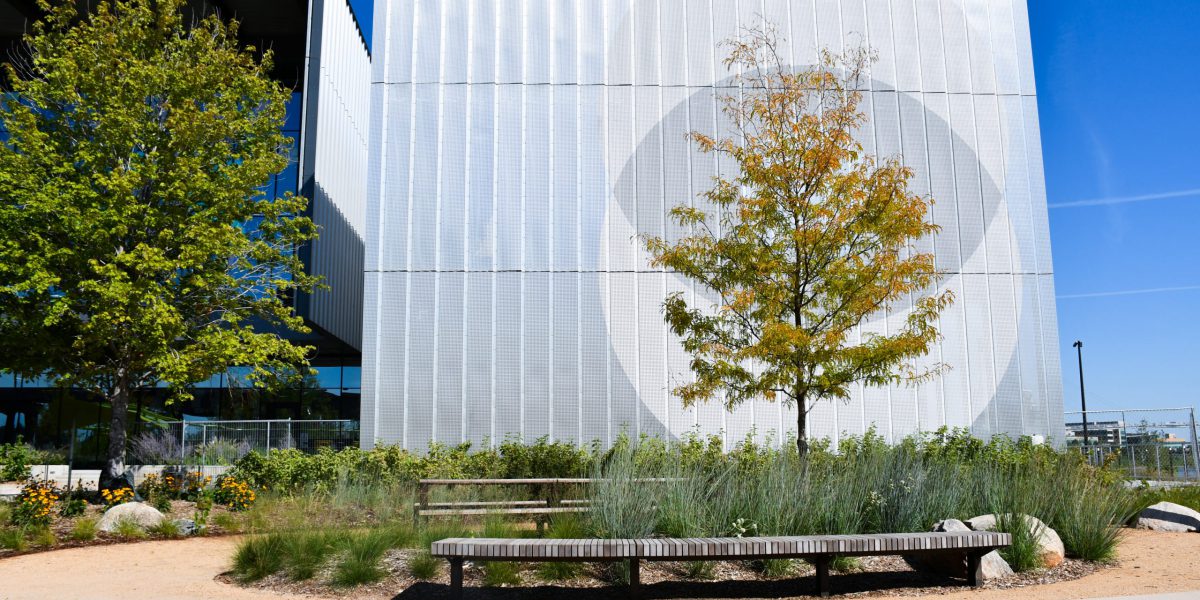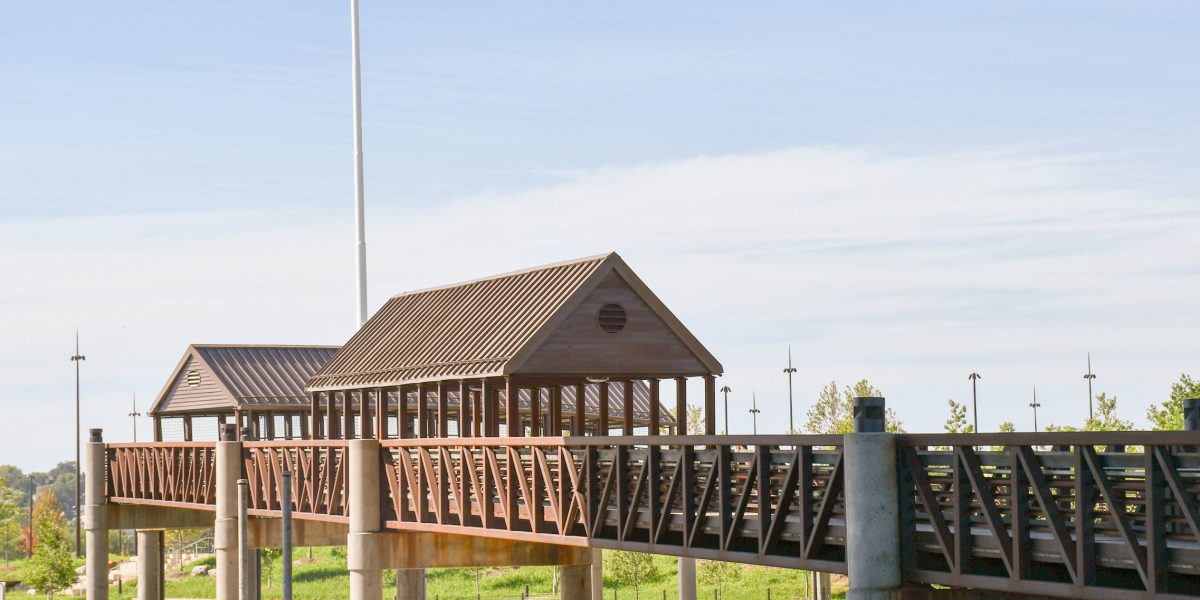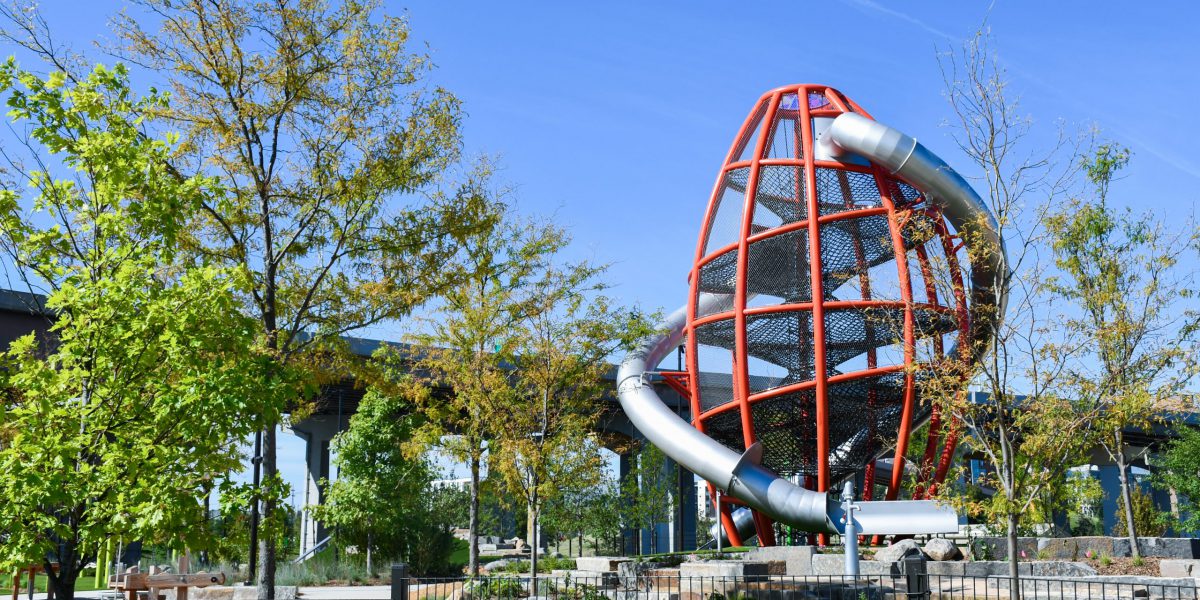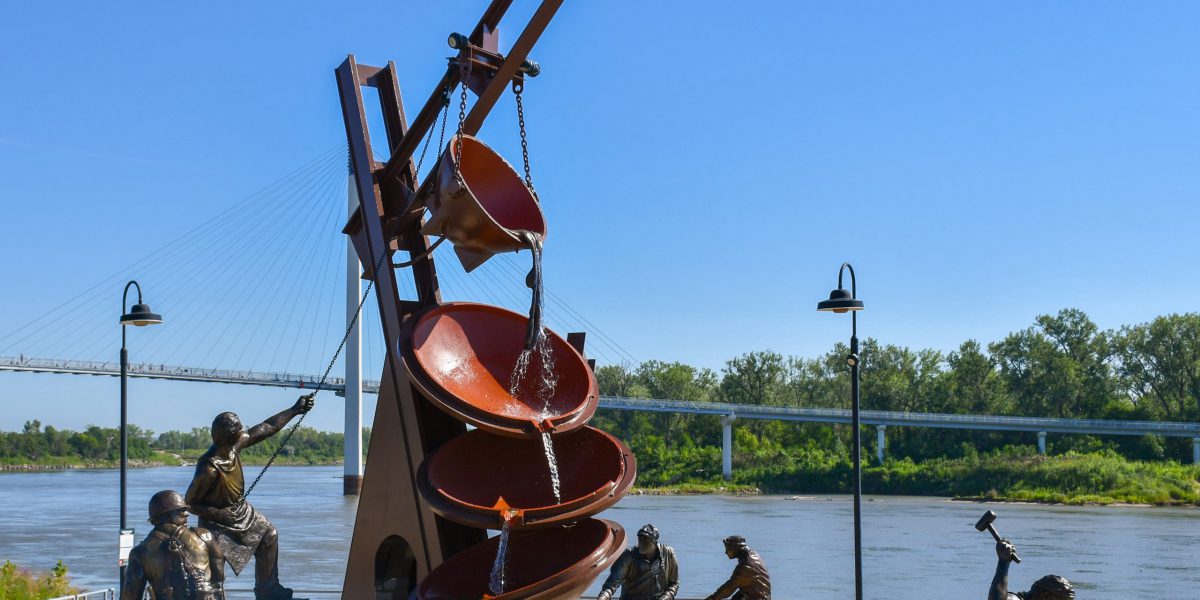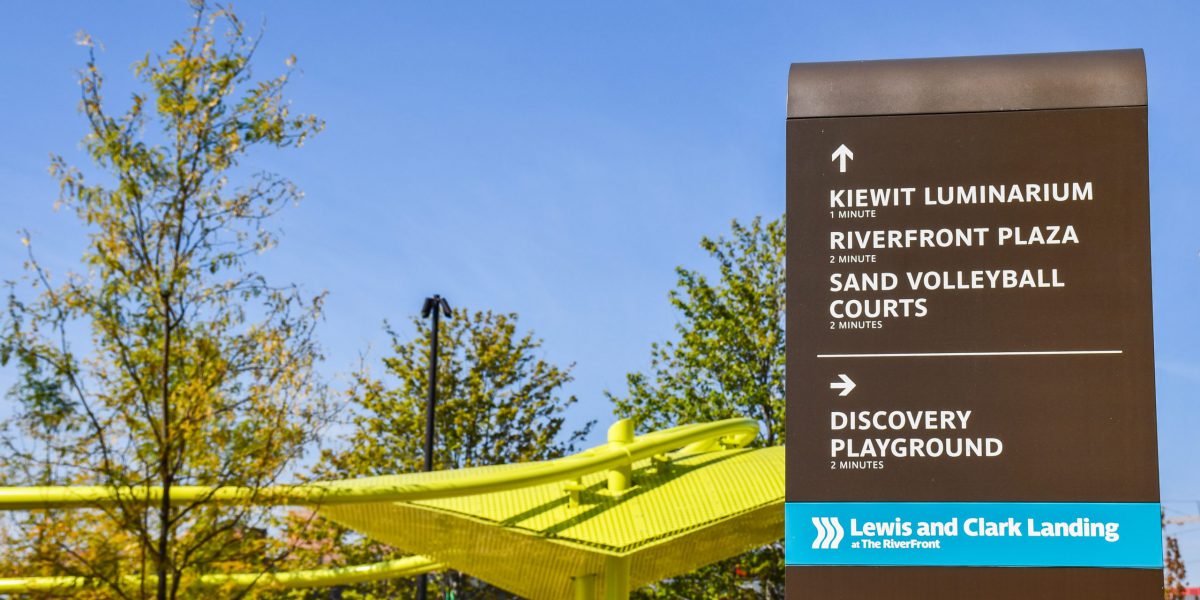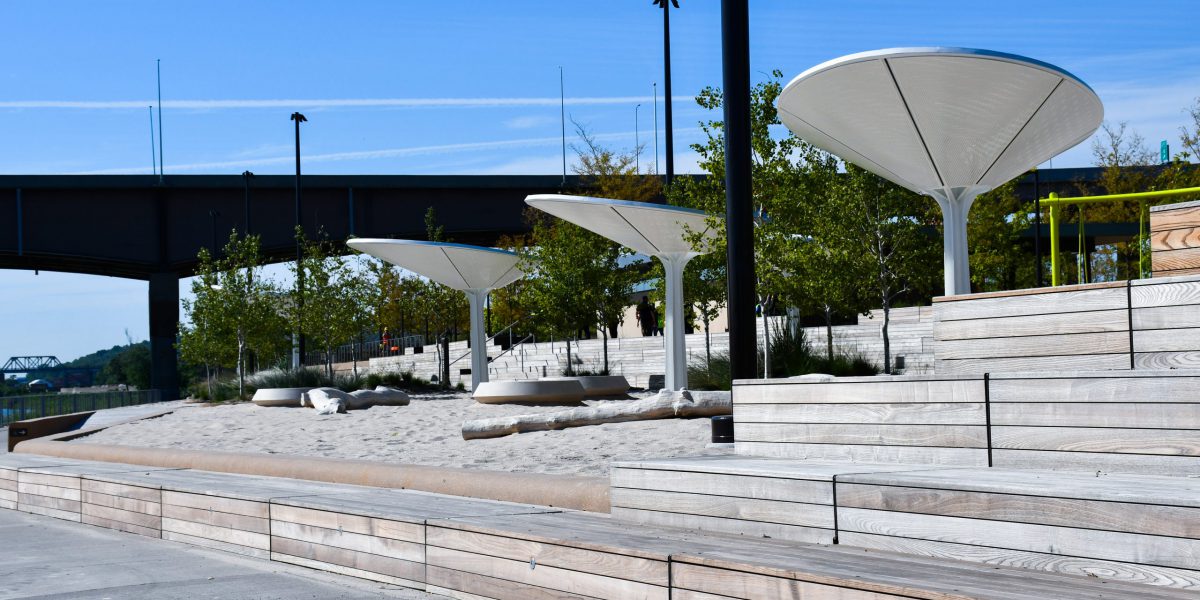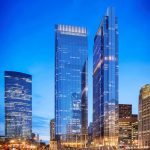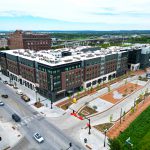The RiverFront: Revitalizing the Heart of Omaha
The Return to the River
———————————————————
Piercing through the heart of Omaha’s downtown business hub lies The RiverFront—72 acres of brilliantly restored recreational parkland that navigate visitors from the heart of Omaha’s metro to the Missouri riverside. The Gene Leahy Mall, Heartland of America Park, and the Lewis and Clark Landing congregate harmoniously to bring the city’s most ambitious recreational park project to life.
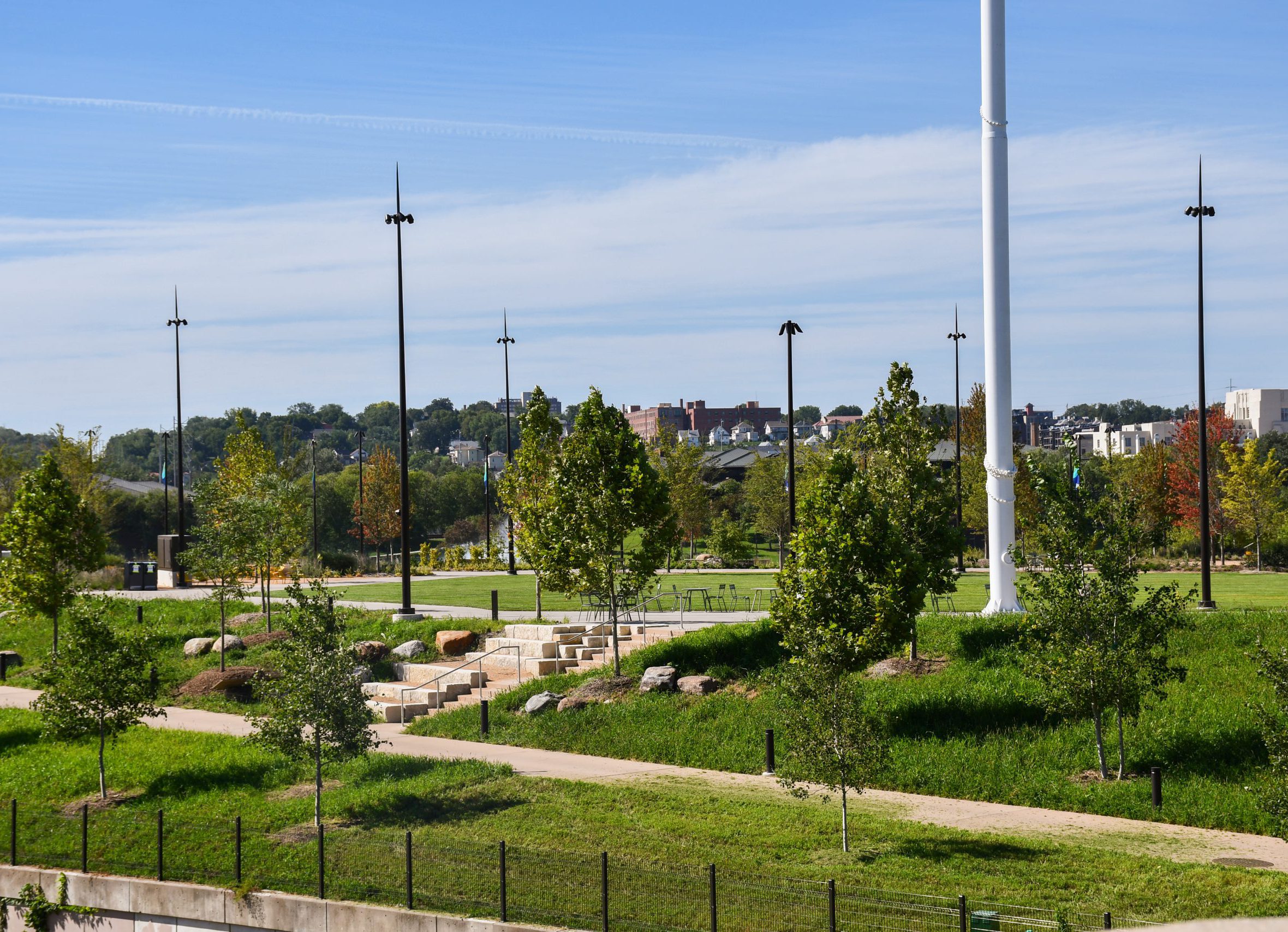
The significance of the park’s restoration can be traced to its initial impact on the Omaha community. Fifty years ago, late Omaha mayor Gene Leahy organized the revival of a depreciating downtown by championing the creation of the Central Park Mall. The park became an urban oasis amidst the abandoned buildings and ushered much-needed foot traffic to Omaha’s dwindling urban core. The spur in activity propelled businesses to revitalize growth in the areas surrounding the park, stopping the city’s downtown evacuation in its tracks.
Leahy’s “return to the river” movement paid enormous dividends for Omaha’s downtown. The central park was renamed in his honor and remains an iconic staple of the city’s identity. Now, it’s received a monumental renovation.
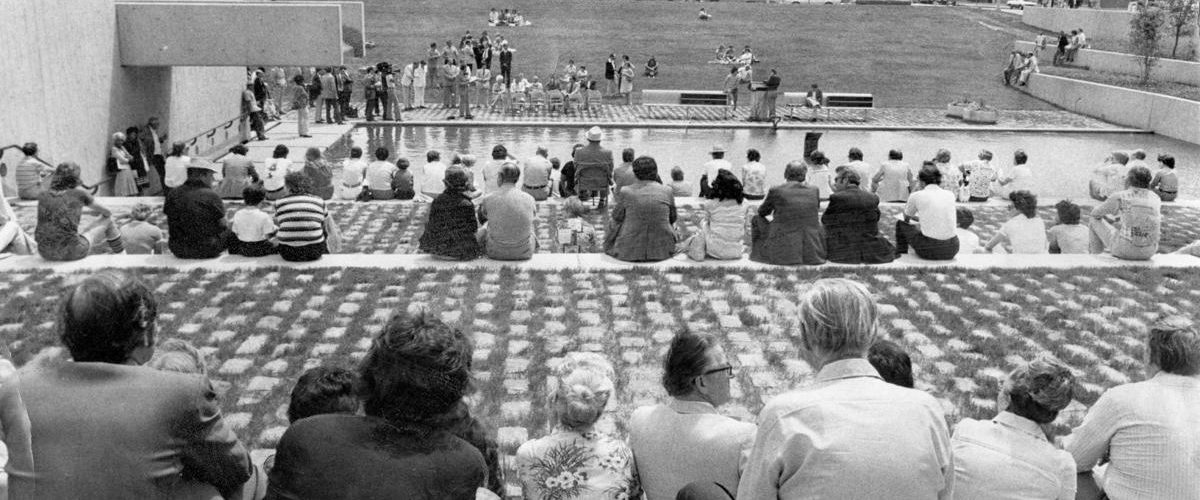
The Gene Leahy Mall
———————————————————
The RiverFront begins with the Gene Leahy Mall. The opening project is a 9.6-acre park that spans from 8th to 13th Street and acts as the connecting expanse between Omaha’s urban downtown and the extensive parkland bordering the Missouri River.
The Gene Leahy Mall delivers scenic views of Omaha’s skyline and is complimented by a 40,000-square-foot grass expanse that hosts a contemporary band shell. A promenade splits the park that can be traversed via a walkway leading east and west.
To the east of the promenade, a sidewalk borders the park’s perimeter and invites visitors to interact with public-access firepits, a sculpture garden, lawn game areas, and playground equipment. The walkway leads visitors past Omaha’s famous Solo Building archway and the iconic slides original to the Central Park Mall. The western portion of the promenade travels to the pond waterfront adorned with large, outdoor-grade screens underneath the 10th Street bridge, park benches, and a dog park.
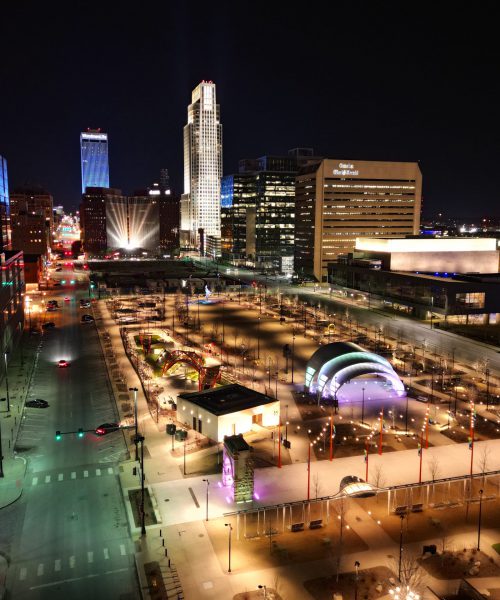
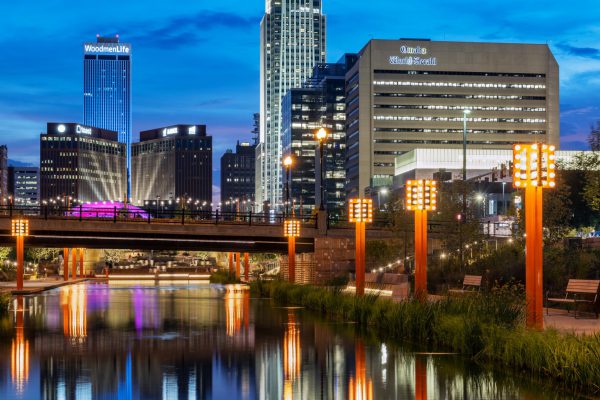
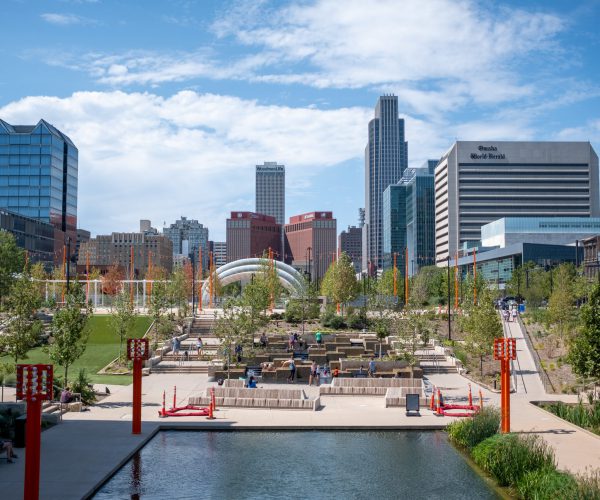
A Change in Terrain
Mechanical, electrical, and plumbing (MEP) engineers are accustomed to formulating solutions inside of structures. The challenges lie in bringing the utilities throughout the building and integrating them vertically. However, the challenges associated with providing mechanical and electrical integration for the Gene Leahy Mall, and the RiverFront as a whole, were relaying miles upon miles of distribution in an outdoor environment. Ken Morgan, P.E., was a lead electrical engineer on the project responsible for the power distribution, company switch design, and other key electrical infrastructure components that brought all three parks to life. Ken noted a stark difference in integration challenges between electrical distribution with interior structures compared to outdoor parks.
“There were a lot of voltage drop concerns on the circuits, which we wouldn’t typically have to worry about on an interior project,” Ken explained, “Design challenges involved questions surrounding how to route conduits up trees, how to get around root balls, how do you attach electrical components to trees in a way that meets code requirements, those are all factors you have to consider.”
Lighting is immersed throughout the Gene Leahy Mall. Examples include benches, handrails, trees, and lighting along the path and waterway. Hiding the onsite drivers, without compromising their functionality, were a leading consideration for the lighting equipment. The team used a combination of above-grade potted drivers and drivers hidden beneath deck space to avoid distraction from the immersive architecture in the space and to keep drivers safe from water damage.
Providing mechanical infrastructure around trees needed to consider the impact and potential issues the park may run into as root networks grow and expand. Aaron Schmidt was the lead mechanical designer for all three parks and coordinated the mechanical and plumbing integration. He noted the dangerous implications of not considering the change in the environment.
“You have to consider how these designs will withstand the test of time and what tree networks will look like ten to fifteen years down the road,” Aaron explained, “Our designs can’t interfere with the tree installation, consider how the trees will grow, and we also have to coordinate our designs with the telecom team and the electrical team to avoid complications in the future.”
Heartland of America Park
———————————————————
Originally opened in the 1990s, the Heartland of America Park is approximately 31 acres in size, highlighted by a scenic lake with walking paths and a multifunctional skating rink.
Moving east along the park, visitors are greeted by the 8th Street plaza, which hosts outdoor vendors and various open-concept congregate areas. A large promenade escorts parkgoers eastbound to Heartland of America’s crown jewel—The Skate Ribbon. The Skate Ribbon is a 300-foot multifunctional rink for ice skating in the winter and rollerblading in the summer.
The promenade continues east to a shorefront pier and walkways branch off at various lengths to lead visitors to the lakeside trails, which include an amphitheater and terraces, or to open lawn spaces.
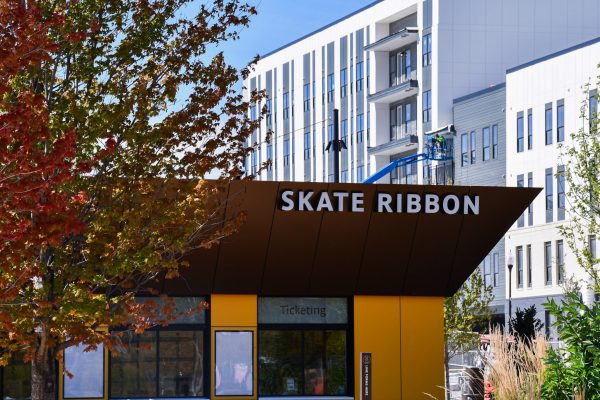
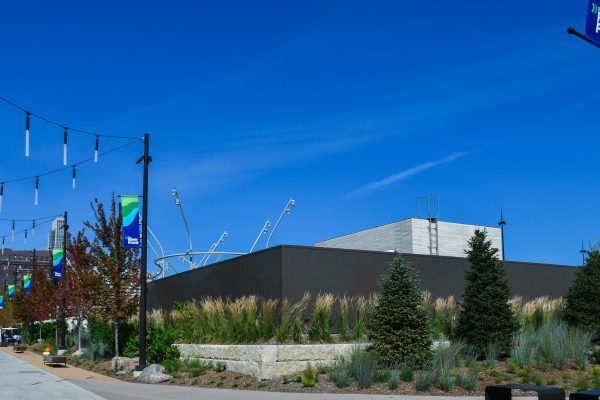
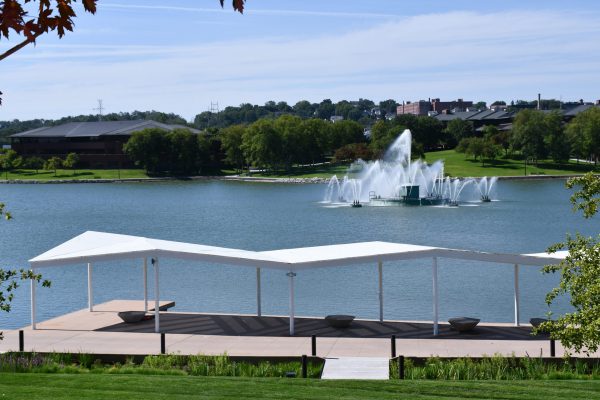
A Mechanical Marvel
One of the largest mechanical marvels of the Heartland of America park is The Skate Ribbon which consists of two large ice rinks interconnected via a winding ice skate “trail.” Ease of maintenance and user functionality were both key drivers of the ice rink’s design.
The ice rink is serviced by rotary-screw water chillers aligned on a mat-slab foundation with two independent refrigerant circuit loops that provide the ice rink with optimal surface temperature. The chillers can unload electrical capacity based on the outdoor temperature, helping prevent overuse of the chiller components and saving on electricity during colder winter days. The design team created additional fittings for temperature control sensors and a thermostat-controlled evaporator heater to protect the internal devices from freeze damage during exceptionally cold conditions (-20°F).
“Our equipment selection was driven by the ice rink’s scale and the ice-making equipment’s requirements. Ease of maintenance and user operability led us to choose a more packaged and readily-available chiller,” Aaron explained, “The maintenance in the future is something that will always be available and can be serviced by a large pool of contractors.”
The ice rink produces approximately an inch and a half of ice— the ice thickness is optimal for efficient electrical unloading and ideal for maintaining control of the ice conditions throughout the winter.
Alvine Engineering was a key advocate in ample mechanical yard maintenance access that allowed technicians to easily service, diagnose, and provide preventative care for the chiller systems. This allowed the park to keep maintenance costs low and prevent park closure for maintenance during season activity peaks.
Lewis and Clark Landing
———————————————————
Lewis and Clark Landing’s design vision was inspired by the inquisitive nature and adventurous spirit of the pioneers that ventured west and settled the Omaha territories. Just east of the Heartland of America Park, Lewis and Clark Landing branches northward along the Missouri River shoreline and surrounds the Kiewit Luminarium, an all-ages science center along the riverfront.
Heading up the connecting trail from the Heartland of America Park, the trail opens into a wide promenade leading guests to a trendy urban beach and the arrival plaza—a kid-friendly playground with accommodating equipment. Following the promenade, visitors are guided toward the Kiewit Luminarium.
To the north of the Kiewit Luminarium lies recreational courts and sand volleyball, supplemented with pro-grade sports field lighting. A large riverfront plaza with gathering spaces and local greenery caps off the park.
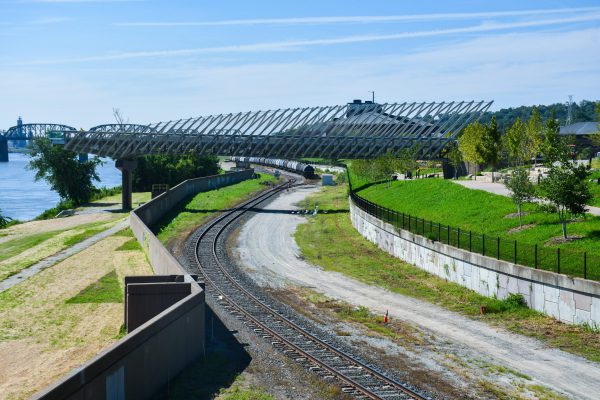
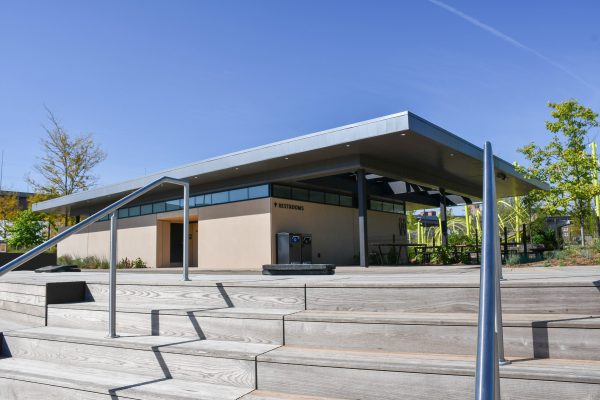
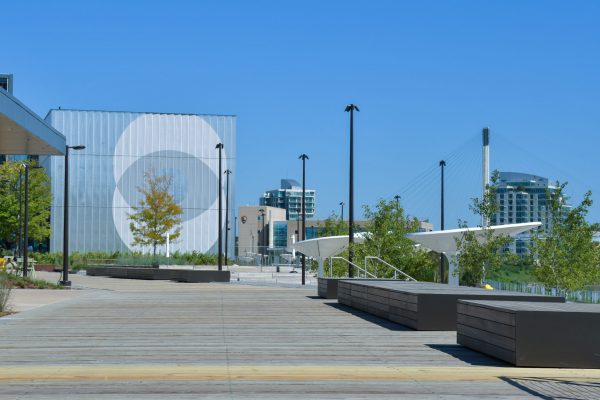
Crossing Concrete
The park’s infrastructure is highlighted by a large gravity floodwall and structures supported by 2-foot thick mat slabs. The sheer thickness of the concrete made coordinating underground distribution a challenge for the mechanical and electrical teams. The bathroom facilities throughout the park act as infrastructure hubs, with integration reaching out across their respective spaces. It was vital for the design team to optimize the underground infrastructure to ensure the parks’ success. With dedicated coordination across disciplines, the design team formed an innovative solution.
“We had to coordinate the gravity drains to be in an interstitial space between the floor slab of the building and the top of the mat slab,” Aaron stated, “A big part of coordinating the piping was finding the right depth and space to place the drains. We didn’t want to go too deep and excavate more dirt than we needed, but we also wanted ample space for the other infrastructure.”
Since the Omaha Corps of Engineers designed the floodwall and adjoining terrace, creating penetrations in either was a non-negotiable. Trenching the utilities, however, was still on the table.
“There was a certain amount of space below the concrete on grade where new utilities could be installed,” Ken stated, “So, we trenched the utilities concrete deck and transported conduits over bleachers to supply power distribution over the top of the wall.”
Ken went on to say that the floodwall utility routing wasn’t a plan original to the schematics. However, innovative adaptations and coordination with the architects help ensure success with any expansive outdoor space.
“You’ve got to be open to change and unique solutions,” Ken concluded, “A project of this scale means not everything’s going to go according to plan. Being able to think on your feet and collaborate with all parties involved in bringing the project together is how you succeed.”
A Riverfront Restored
An iconic staple of Omaha’s downtown apparatus is once again spurring economic growth, cultivating community, and creating impactful memories for thousands of people. Prioritizing the infrastructure for ease of maintenance and long-term functionality will help it continue to serve the community for years to come.
“Our emphasis was put towards keeping the park open for as long as possible,” Aaron Schmidt concludes, “Designing to prevent issues in the future and allowing controls to be easy-to-use and teach was imperative for the long-term success of the park.”
On top of ensuring longevity and ease of use were attainable for The RiverFront’s infrastructure, it was also important to keep the park’s tranquil aesthetics untarnished.
“We didn’t want to take away from the beauty of the park,” Ken Morgan stated, “Keeping our portions of the park under wraps helps immerse the guests in the park’s beautiful architecture.”
Learn more about The Riverfront here.


